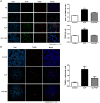Green propolis extract attenuates acute kidney injury and lung injury in a rat model of sepsis
- PMID: 33723330
- PMCID: PMC7960724
- DOI: 10.1038/s41598-021-85124-6
Green propolis extract attenuates acute kidney injury and lung injury in a rat model of sepsis
Abstract
Sepsis is the leading cause of acute kidney injury (AKI) and lung injury worldwide. Despite therapeutic advances, sepsis continues to be associated with high mortality. Because Brazilian green propolis (GP) has promising anti-inflammatory, antioxidant, and immunomodulatory properties, we hypothesized that it would protect kidneys and lungs in rats induced to sepsis by cecal ligation and puncture (CLP). Male Wistar rats were divided into groups-control (sham-operated); CLP (CLP only); and CLP + GP (CLP and treatment with GP at 6 h thereafter)-all receiving volume expansion and antibiotic therapy at 6 h after the procedures. By 24 h after the procedures, treatment with GP improved survival, attenuated sepsis-induced AKI, and restored renal tubular function. Whole-blood levels of reduced glutathione were higher in the CLP + GP group. Sepsis upregulated the Toll-like receptor 4/nuclear factor-kappa B axis in lung and renal tissues, as well as increasing inflammatory cytokine levels and macrophage infiltration; all of those effects were attenuated by GP. Treatment with GP decreased the numbers of terminal deoxynucleotidyl transferase-mediated deoxyuridine triphosphate nick-end labeling-positive cells in renal and lung tissue, as well as protecting the morphology of the renal mitochondria. Our data open the prospect for clinical trials of the use of GP in sepsis.
Conflict of interest statement
The authors declare no competing interests.
Figures







Similar articles
-
Protective Effect of Salidroside on Acute Kidney Injury in Sepsis by Inhibiting Oxidative Stress, Mitochondrial Damage, and Cell Apoptosis.Biol Pharm Bull. 2024;47(9):1550-1556. doi: 10.1248/bpb.b24-00470. Biol Pharm Bull. 2024. PMID: 39313391
-
Effects of continuous erythropoietin receptor activator in sepsis-induced acute kidney injury and multi-organ dysfunction.PLoS One. 2012;7(1):e29893. doi: 10.1371/journal.pone.0029893. Epub 2012 Jan 3. PLoS One. 2012. PMID: 22235348 Free PMC article.
-
Effects of adiponectin on acute lung injury in cecal ligation and puncture-induced sepsis rats.J Surg Res. 2013 Aug;183(2):752-9. doi: 10.1016/j.jss.2013.01.055. Epub 2013 Feb 16. J Surg Res. 2013. PMID: 23522481
-
Iron Homeostasis and Ferritin in Sepsis-Associated Kidney Injury.Nephron. 2020;144(12):616-620. doi: 10.1159/000508857. Epub 2020 Jul 21. Nephron. 2020. PMID: 32694248 Free PMC article. Review.
-
Acute kidney injury and lung dysfunction: a paradigm for remote organ effects of kidney disease?Microvasc Res. 2009 Jan;77(1):8-12. doi: 10.1016/j.mvr.2008.09.001. Epub 2008 Sep 11. Microvasc Res. 2009. PMID: 18929580 Free PMC article. Review.
Cited by
-
Urinary sodium excretion is low prior to acute kidney injury in patients in the intensive care unit.Front Nephrol. 2022 Sep 30;2:929743. doi: 10.3389/fneph.2022.929743. eCollection 2022. Front Nephrol. 2022. PMID: 37675036 Free PMC article.
-
Development of Novel Herbal Compound Formulations Targeting Neuroinflammation: Network Pharmacology, Molecular Docking, and Experimental Verification.Evid Based Complement Alternat Med. 2023 May 24;2023:2558415. doi: 10.1155/2023/2558415. eCollection 2023. Evid Based Complement Alternat Med. 2023. PMID: 37266321 Free PMC article.
-
Effects of Standardized Brazilian Green Propolis Extract (EPP-AF®) on Inflammation in Haemodialysis Patients: A Clinical Trial.Int J Nephrol. 2022 Nov 22;2022:1035475. doi: 10.1155/2022/1035475. eCollection 2022. Int J Nephrol. 2022. PMID: 36457860 Free PMC article.
-
Obesity aggravates acute kidney injury resulting from ischemia and reperfusion in mice.Sci Rep. 2024 Apr 29;14(1):9820. doi: 10.1038/s41598-024-60365-3. Sci Rep. 2024. PMID: 38684767 Free PMC article.
-
GOLPH3 promotes endotoxemia-induced liver and kidney injury through Golgi stress-mediated apoptosis and inflammatory response.Cell Death Dis. 2023 Jul 21;14(7):458. doi: 10.1038/s41419-023-05975-x. Cell Death Dis. 2023. PMID: 37479687 Free PMC article.
References
-
- KDIGO AKI Writing Group Kidney Disease: Improving Global Outcomes (KDIGO) clinical practice guideline for acute kidney injury. Kidney Int. 2012;2(Suppl. 2):1–141.
Publication types
MeSH terms
Substances
LinkOut - more resources
Full Text Sources
Other Literature Sources
Medical
Miscellaneous

